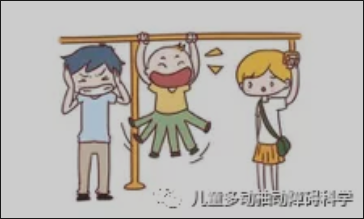









发布时间:2020年09月28日 来源:管理员
 立即收藏
立即收藏
来源:奥胡斯大学
奥胡斯大学、儿童与青少年精神病学中心、哥本哈根大学、英国诺丁汉大学和伦敦国王学院合作,于8月1日在《美国儿童与青少年精神病学学会杂志》上发布了一项重大研究项目。
该研究强调,对多动症患儿家长进行个人行为治疗,其效果远远超出了目前丹麦儿童和青少年心理健康服务机构提供的常规治疗方法。
研究人员分别在丹麦的三个常规专科诊所调查了家长行为干预对治疗学龄前儿童多动症的效果。该研究共调查了164名3至7岁的儿童,并随机对他们分组,实验组进行新森林育儿计划(NFPP),而对照组采用以往的常规治疗。结果显示,相比于常规治疗组,接受新森林育儿计划的父母,在 48周的随访中表示孩子症状明显减轻,这些家长还表示,与常规治疗组相比,他们在育儿过程中能够得到更多尊重,家庭压力也随之减少。

“学龄前儿童多动症造成了一系列需要进行干预的不良后果,但在日常医疗保健系统中实施行为干预,其效果却鲜为人知。研究日常治疗效果对于改善儿童多动症及其父母的干预治疗非常重要。该研究表明,在现实生活中,对父母进行育儿行为干预,可以让多动症儿童得到更好的治疗效果。”
“新森林育儿计划为父母提供训练孩子集中注意力的方法,提高了孩子耐心等待和应对挫折的能力,同时也旨在为多动症儿童营造更轻松的家庭氛围。”
以上言论来自奥胡斯大学医院儿童和青少年精神病学中心临床心理学家安妮梅特兰格(Anne-Mette Lange),以及奥胡斯大学、论文第一作者里斯科夫(Risskov)。
本次研究简介
· 共有164名3至7岁儿童及其父母参加此次研究。这些孩子通过一般转诊系统转诊,被确诊为多动症。然后研究人员询问这些家庭是否愿意参与该项目。有的孩子选择了这个项目,其他孩子则接受常规治疗。
· 新森林育儿方案中的个人治疗方法表明:可以根据不同家长的具体需求进行干预。
· 该研究始于2012年,实验对照组共有1300名儿童。其中,164名儿童用于检测多动症是否具有代表性。
· 该研究由奥胡斯大学医院、丹麦哥本哈根大学医院以及诺丁汉大学和英国伦敦国王学院合作完成。
· 该研究利用丹麦国家登记册建立实验对照组,其中包括研究期间接受多动症诊断的全国所有学龄前儿童。这项研究表明,在接受丹麦儿童和青少年心理健康服务的同时,进行此次实验的儿童和家长对学龄前儿童多动症治疗研究起到了示范作用。
· 对实验结果进行的研究表明,儿童性别、家庭社会经济状况、父母多动症症状和儿童行为问题等对治疗效果并无影响,而干预措施是一项非常有效的治疗方法,且不受家庭和儿童自身特点的影响。
· 《华尔街日报》每月都会在播客中选择一篇文章进行重点报道。今年8月,安妮·梅特·兰格(Anne Mette Lange)接受采访,她在采访中谈到了丹麦进行的研究项目、父母的行为干预以及多动症等情况。
· 每月,该杂志还会挑选一篇文章列入儿童和青少年心理医生及相关专业人员进一步教育和培训的在线方案。其中该项目中有一篇关于家长行为干预的文章,被选定为在线方案的每月文章。
学龄前多动症简介
学龄前多动症是一种常见的的神经发育障碍,严重影响儿童日常生活。该症状是一种慢性病,接受药物治疗,仍然不能完全消除该症状对日常生活带来的影响。长期以来,学龄前多动症给家庭、健康、社会、教育甚至司法系统带来沉重负担,这一年龄段的儿童需要接受更有效的多动症干预措施。

【原文资料】
Instructional Process
Download Fact Sheet
Effective academic instruction helps children with ADHD succeed. As you plan and carry out lessons, use these techniques across subject areas and grade levels to enhance the learning for students with ADHD.
Introducing Lessons
Students with ADHD learn best when structure is incorporated throughout lesson planning. Having a sequence that follows a basic routine and maintains a level of consistency are both vital. It allows students to focus on the new information and activities, rather than on trying to figure out what comes next and what they are supposed to do. Use the following strategies to develop a routine that works for you, and use it when introducing every lesson.
Summarize the activities of the whole lesson visually and verbally
Start any lesson with a review of what the student will learn and the activities you will use to teach it. For example you could say, “Yesterday we worked on counting by tens. Today we are going to review yesterday’s lesson. We are then going to learn to count by fives. You will be doing work with your partner as well as independent work.” On the board you might have written
1. Review counting by tens
2. Learn to count by fives
3. Practice counting by fives with your partner
4. Practice counting by fives on your own
Present learning objectives in many ways
Students with ADHD often benefit from many modes of presentation. For example, with learning objectives, you can write them on the board, say them aloud, ask students to repeat them, or ask students to copy them off of the board. Include at least two forms of presentation.
Describe behavior expectations
Tell students how they are expected to behave during the lesson. For example, if they are doing group work, explain that they may talk with their partner or group. If they are doing independent work, you might tell them you expect them to work quietly. You also want to include how they can get your attention if they have a question, need help, or if the behavior expectations provide a challenge, e.g., they feel disrupted by other students talking.
List materials
Tell students the materials they will need during the lesson rather than leaving them to figure it out on their own. Be specific. For an art project, tell them specifically the items they will need, such as “three sheets of construction paper, their crayons, and scissors.” For a reading assignment, you might tell them they need their reading book, workbook, and two pencils.
Include time limits
Tell students how long they will have to work on each activity, and consider setting a timer to help them externally see the time. Include the specific time set aside for each part of the lesson―reviewing previous materials, instruction of new lesson, group work, and independent work―rather than large amounts of time such as “the next hour” or “the whole class period.” Time limits are meant to help students stay on track and enhance their learning, not cause anxiety. You might need to experiment with different time limits to see what works for your students.
Teaching the Lesson
Conducting the lesson means presenting new material to students and letting them practice. To help students learn and remember the new information, connect it to prior knowledge. Give them ample opportunities to practice the material with you guiding, with other students, and on their own. Provide feedback throughout the lesson and prepare different types of tools to help students who are struggling.
Stick to the plan
Your introduction sets expectations for the whole lesson. Try to follow the outline you have given. This strategy helps reinforce structure and consistency within a lesson. If changes are made, provide explanations so that they become predictable.
Review the previous lesson
Students with ADHD are more likely to have deficits with their working memory. Help students recall previous knowledge by reviewing it. This practice will not only reinforce the previous lesson, but also help them remember the new lesson. Practice provides context for them to connect to in their memory.
Provide guidance to stay focused
Students with ADHD lose focus easily. They might become captured by a day dream or other activities in the classroom. During lessons, help them stay focused by using tools such as guided notes, colors, mnemonics, and probing questions.
Check for understanding
While presenting the lesson and during practice activities ask open-ended questions. You might start by asking and then answering your own questions. You can then guide the class to the answer, allow students to answer collectively, and lastly answer on their own. Sample questions include, “What have you learned so far?” “How did you get that answer?” and “Why is this information important?”
Give students enough time
Often more processing time is needed to learn new tasks. One teaching model, the gradual release of responsibility, transfers responsibility from the teacher to student through four stages (I do, we do, you do together, you do alone). Giving ample time in each stage allows students to practice mastery of information before moving on.
Provide extra support
Watch for students who are having difficulty comprehending the information. Provide extra help by explaining the material in a different way, using more examples, or having another student serve as a peer tutor.
Break work into small steps
When completing class work, divide assignments into smaller pieces. For example if you have a worksheet with 10 questions, cut the worksheet in half. Give the students the first five questions and then after they complete it, give them the remaining five. This helps students learn to break tasks into steps and keeps them engaged, setting them up to successfully complete an entire assignment.
Incorporate assistive technology
The use of technology allows students to participate actively and may help them organize their thoughts. Allowing students to do practice work on a computer or tablet or write on the board are ways to make assignments more engaging. Assistive technology can also be used to separate tasks into components and thus can avoid unnecessary multi-tasking. For example, dictating notes before typing or writing an essay separates brainstorming from the task of writing and can make it more manageable.
Provide time reminders and model how to pace
Often students with ADHD need help managing their time. Even though you’ve give total times for the lesson and each activity, continue to provide consistent and frequent reminders. In addition, model for students how to pace and work within a given time limit. For example, “You have 10 minutes left to complete these 6 practice problems. You should be on problem number three or four by now.” These reminders help students stay on task and complete their work in the allotted time.
Ending a Lesson
Conclude your lesson and help students transition to the next activity smoothly. How you end a lesson is as important as how you start it. Make sure you finish strong so that you can transition to the next lesson and start the process over with ease.
Summarize key points
Help students solidify the new knowledge they learned by reviewing the key concepts. Repetition is a must for student with ADHD. You can use open-ended questions to have students explain what they learned, or you can restate the objectives.
Review take-home assignments
As with activities during the lesson, make sure to review homework assignments. Ask students to read the assignment listed on the board and write it down. You might even have a few students repeat what the assignment is out loud. Consider checking planners to ensure that students wrote everything down accurately. Remember to tailor practice homework to skills the students have learned. Independent practice at home should serve as a reinforcement to promote retention of the content taught.
Smooth transitions
It is important for students with ADHD to know what activity or situation is coming up next. You especially want to focus on reminding them of any changes in the rules for the next activity. Step-by-step instructions on how to prepare for the next lesson, visual prompts, and more time for students to organize will help create a smooth transition.
点击查看原文
